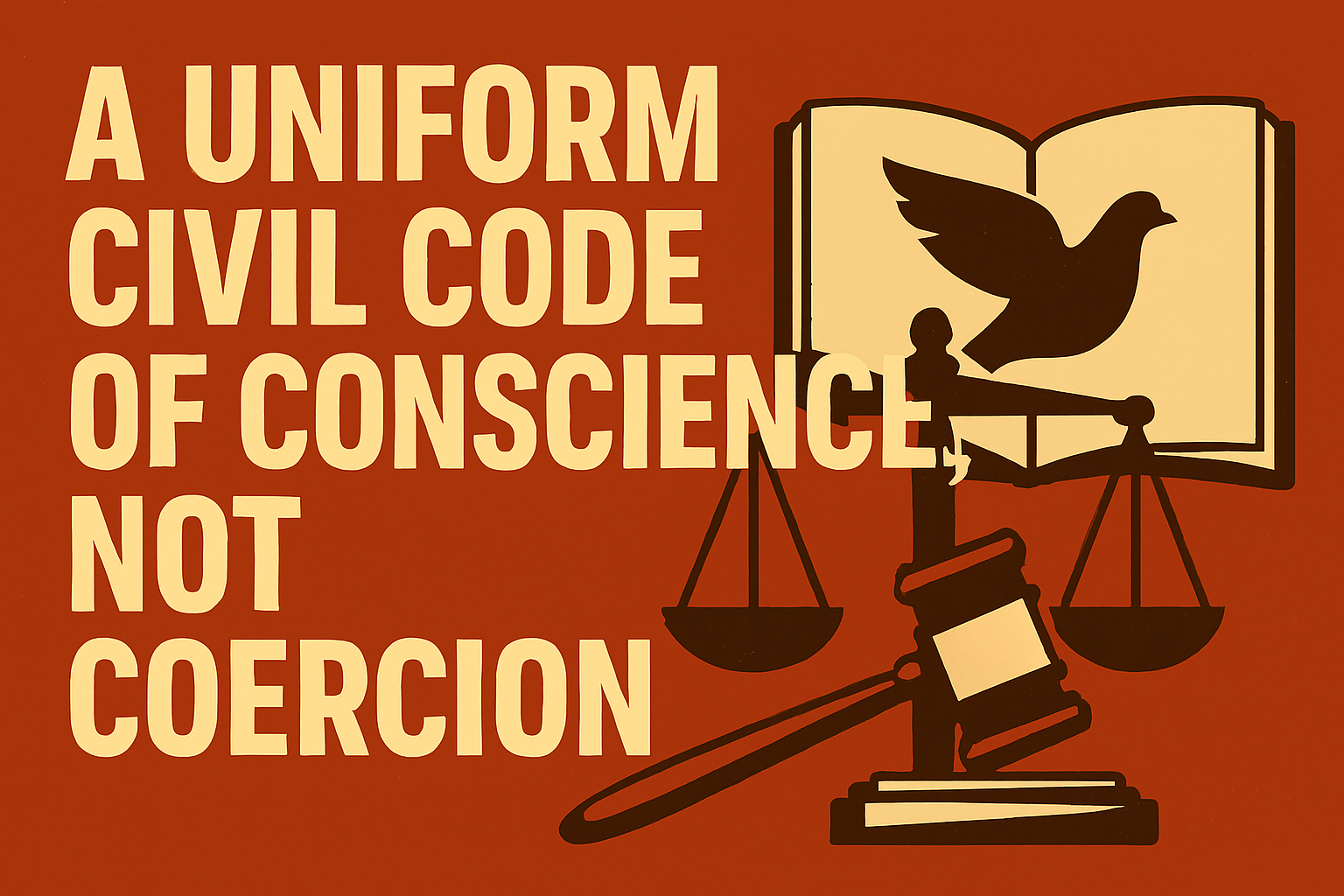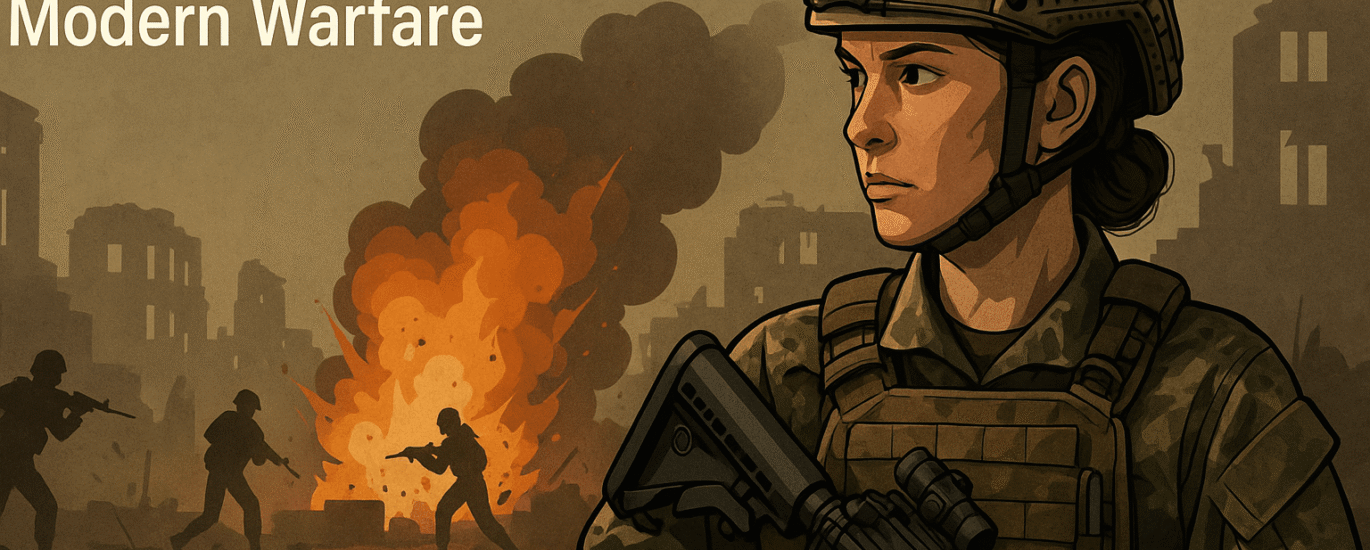



Author: Sudeshna Das
Institution: Vidyasagar College,University of Calcutta
In this new age of war, women’s roles have moved beyond passive-victim or peripheral roles. While the methods of warfare have developed along with technology, so too have the means employed to manipulate and destroy populations—and within these, the weaponizing of women continues to be one of the most disquieting and under-observed features. The term “weaponization of women” is used to describe the systematic use of women’s bodies, identities, and social roles as war weapons. Regardless of whether it is through mass sexual violence, forced pregnancy, abduction, cyber exploitation, or propaganda, women are targeted in a deliberate attempt to undermine communities, dismantle social cohesion, and entrench long-term trauma.
This piece delves into the complex manner in which women are weaponized in contemporary war and the humanitarian and legal responses (or absence thereof) to these actions.
From Rwanda and Bosnia to Syria and Ukraine, women’s bodies have increasingly turned into battlefields themselves. With increased awareness and the developing international legal framework, justice continues to be elusive for most victims. This requires immediate reform in the manner in which the international community, legal systems, and civil society address this persistent humanitarian emergency.
Sexual violence is n’t a new armament of war. Records of methodical rape and abuse of women have was in wars for centuries. The magnitude and strategic ideal of similar violence reached an especially contemptuous position in the 20th century. In the Bangladesh Liberation War of 1971, 200,000 to 400,000 women were ravished by the Pakistani army. The same kinds of horrors were endured in the Rwandan Genocide of 1994 and the Bosnian War of the early 1990s, where rape was institutionally employed to destabilize and demoralize populations. These war crimes weren’t arbitrary acts of violence but were institutionalized military tactics aimed at demeaning the adversary, annihilating domestic and collaborative links, and demographically manipulating ethnic populations through forced gestation. In all of these cases, women were n’t just casualties of war, they were the means by which war was fulfilled. This precedent was established and continues in contemporary conflicts.
Nowadays, weaponizing women has numerous forms other than outright physical violence. Extremist organisations like ISIS and Boko Haram have abducted large numbers of women in war-torn areas such as Syria, Afghanistan, and Nigeria, deploying them as sex slaves, suicide bombers, and negotiation pawns. They have forced women to marry militants and indoctrinated them ideologically, usually with the threat of murder. In addition, contemporary warfare also entails a digital battlefield. Cyber exploitation has been a new weapon. Women’s pictures are manipulated and disseminated as forged pornography to shame, manage, or silence them—particularly women journalists, peace activists, or political personalities.
Deepfake technology and revenge porn have been employed as weapons of psychological warfare. Women are exploited in propaganda too—as helpless purity that needs protection, or as collaborators with the enemy. Sometimes their victimhood is paraded for political mileage, and at others, their resistance is erased from the records. It creates selective empathy that dilutes the real agency and pain of women.
There has been some legal progress in the identification and execution of similar crimes– force, sexual slavery, forced harlotry, forced gestation, and other sexual violence were codified as war crimes and crimes against humanity in the Rome Statute of the International Criminal Court( ICC). The Geneva Conventions and their fresh Protocols also establish protection for women during fortified conflicts. These inventions constitute advancement in transnational justice, feting gender- crimes as meritorious execution encyclopedically.Despite these norms, justice eludes the lesser part of victims. A veritably small number of cases reach court and are delicate to make. The ICTR and ICTY did charge individualities for rape as a crime of genocide and torture, but persuasions are an exception to the rule. Victims endure smirch, incapability to give substantiation, shy legal representation, and procedural impediments that deny them access to seeking or indeed gaining justice. There’s also a huge gap between law and practice; in numerous cases, victims aren’t apprehensive of their rights or are hovered with vengeance from their communities.
In addition, the language hedge, artistic programming, and lack of trust in legal institutions lead to underreporting. Transnational law also has ailment keeping up with electronic war. While fleshly violence is incompletely addressed, sexual exploitation on the internet remains a legal Argentine area. States aren’t held responsible for cyber acts of war that affect women disproportionately. transnational cooperation is consummate in creating an agreement to make cyber exploitation a war crime when exercised totally. The detention in recognising similar deeds only exacerbates the victimisation of victims in the age of cyberspace.
In the ongoing war in Ukraine, reports of sexual violence against women by invading forces as a form of fear and control have surfaced. Similarly, in Myanmar, mass rape has been endured by Rohingya women at the hands of military forces, according to several human rights organizations. These instances highlight that, geography aside, strategically used sexual violence continues to be a global pattern. Each of these incidents serves to further reveal the inadequacies in international enforcement mechanisms.
In Taliban-held territory, Afghan women’s identities are militarized through structural oppression. Exclusion from education, imposed dress codes, and confinement at home are all part of an ideological struggle that uses gender as a weapon for control. The long-term consequences of such policies are dire—not only do they constitute a massive rights abuse, but they also damage the socio-economic progress of entire countries by excluding half the population.
Palestinian women, too, have suffered structural and physical violence in the Israeli-Palestinian conflict—not only from direct military force but also from displacement, imprisonment, and targeting female activists. The strategy of demoralizing entire populations through attacks on women persists agonizingly routinely. The silencing of women’s voices in conflicts like these is deliberate; it disempowers opposition and diminishes community resilience.
You may also liked this post
1. The Breast Tax: Historical Injustice and Legal Perspectives
2. Breaking the silence: on the legality of marital rape in India
Indeed though India isn’t an active party in transnational fortified conflicts, it faces internal mutinies and collaborative violence in which women are employed as munitions. Women were the main victims of organized sexual violence in the 2002 Gujarat screams and 1984 anti-Sikh pogroms. In Kashmir and the Northeast, custodial rape and sexual violence have come to face constantly. These are n’t single events but part of a systemic pattern whereby sexual violence is used as a means of delivering political or collaborative dispatches. The attendant cerebral trauma frequently has intergenerational goods, oppressively traumatizing families and communities. India’s law criminalizes rape and offers protection under the Protection of Women from Domestic Violence Act and other legislation but war or politically motivated violence against women does n’t get penalized. The necessity is pressing to produce mechanisms of attestation and execution of these cases indeed in non-international fortified conflicts.
Also, special fast- track courts for these cases can be added so that survivors get justice in a timely manner. Civil society associations should also be enabled to give on- ground support and attestation aid.
There must be a multi-pronged approach towards the cessation of the weaponization of women in war. First, there must be an enhancement of international laws to incorporate cyber-exploitation and psychological warfare as crimes. Secondly, there must be survivor-centered support systems that include medical care, psychosocial counseling, and legal aid. No less important is guaranteeing that these services reach the areas of conflict and refugee camps. Involvement of women in peace building is crucial. Their involvement at all stages of conflict resolution is emphasized by UNSC Resolution 1325 on Women, Peace, and Security.
Implementation is supported in erratic ways only. Governments must commit not only on paper but also practically. Formal peace talks and governance must involve women to ensure policy in the post-conflict rebuilding based on gendered insights. Women need to be not just viewed as victims, but also as stakeholders in sustainable peace. In addition, online spaces need to be regulated to prevent the online exploitation of women. Governments and technology corporations need to collaborate to identify, erase, and penalize online war crimes. Global campaigns must work on breaking the silence, educating combatants, and promoting gender-sensitive conflict reporting. Both online and offline public awareness programs must contribute toward changing society’s attitudes normalizing or justifying gendered violence in war. There can be meaningful cultural and institutional change only then.
The weaponization of women in ultramodern warfare is n’t a side effect of conflict; it’s a purposeful, systemic strategy. Whether through physical, ideological, or digital means, targeting women serves the interests of control, terror, and destruction. The continued neglect of this issue in policy, law, and public knowledge reveals a disturbing forbearance for unsexed violence. To move towards peace, the transnational community must fefe the full compass of this weaponization and act decisively. Justice for women is n’t a supplemental concern; it is central to rebuilding societies, securing peace, and upholding the principles of mortal rights and quality. Until the bodies and individualities of women are no longer seen as battlefields, the fight for global justice remains deficient.
1. United Nations. (2000). UN Security Council Resolution 1325 on Women, Peace and Security.
2. Rome Statute of the International Criminal Court (1998).
https://www.icc-cpi.int/resource-library
3. Geneva Conventions and Additional Protocols. International Committee of the Red Cross
(ICRC).
https://ihl-databases.icrc.org
4. Human Rights Watch. (1996). Shattered Lives: Sexual Violence during the Rwandan Genocide
and its Aftermath.
5. United Nations Office on Drugs and Crime (UNODC). (2019). Gender and Armed Conflict:
Understanding the Gendered Dimensions of Warfare.
6. Amnesty International. (2017). My Body Is a War Zone: Sexual Violence in Conflict.
7. ICTY (International Criminal Tribunal for the Former Yugoslavia). Key Judgments.
8. UN Women. (2022). Women in Peace and Security Report.
9. BBC News. (2022). Ukraine War: Reports of Rape and Sexual Violence by Russian Soldiers.
10. Al Jazeera. (2021). Rohingya Women’s Testimonies of Rape by Myanmar Military.
11. Indian Express. (2023). India’s Internal Conflicts and Gendered Violence: A Legal Gap
Analysis.
12. The Leaflet. (2022). India’s War Laws and Women: A Forgotten Crisis.